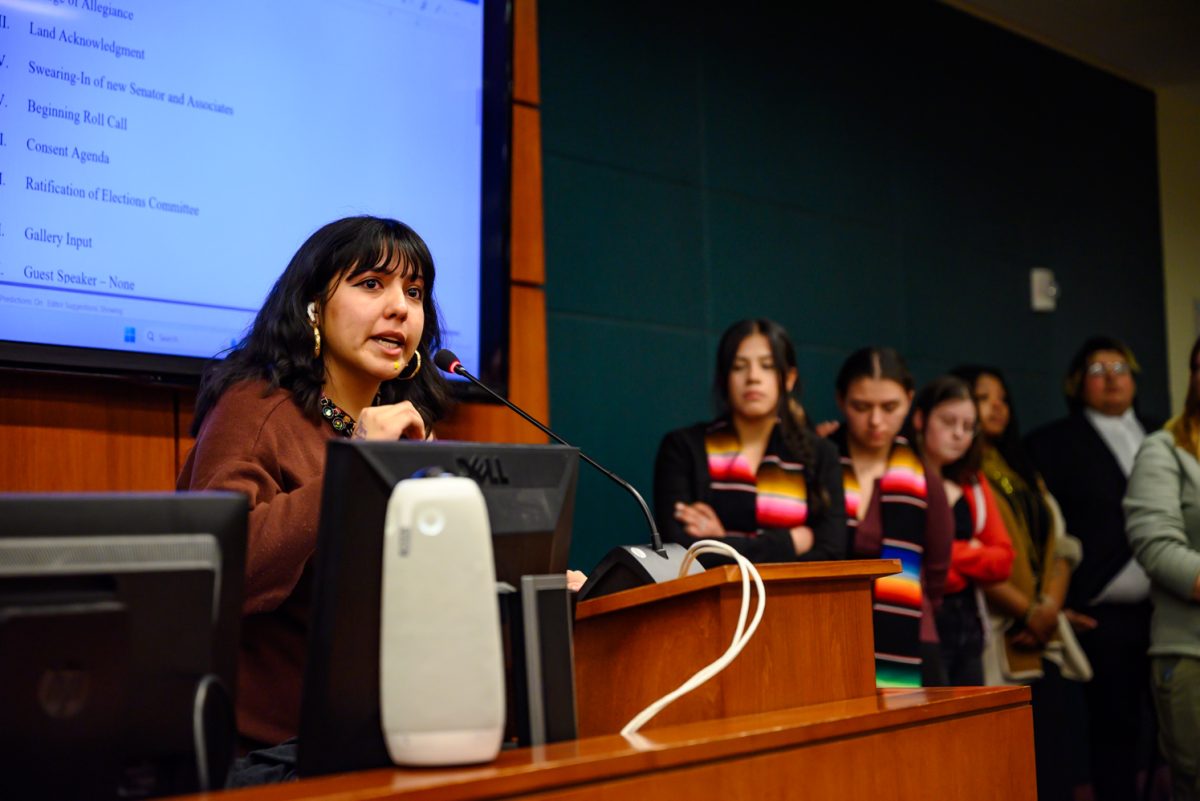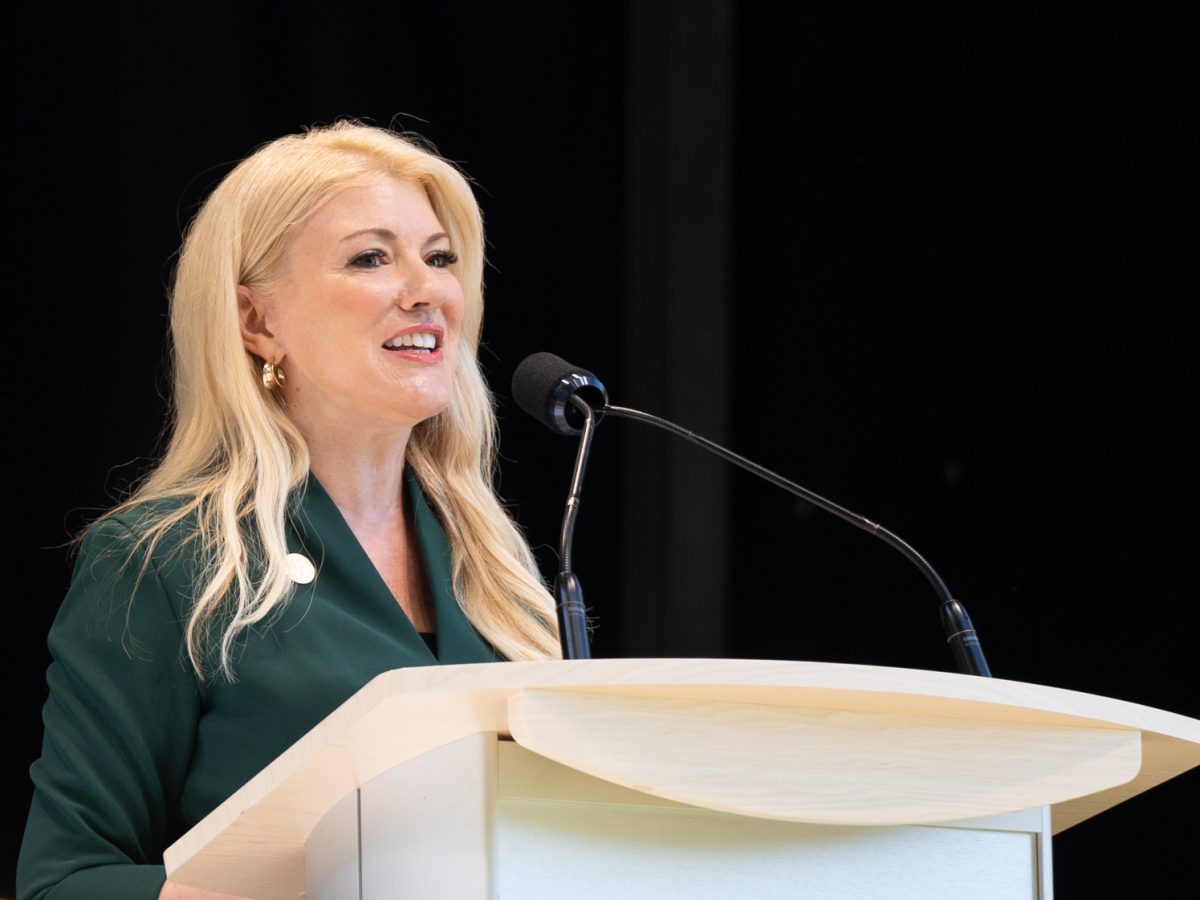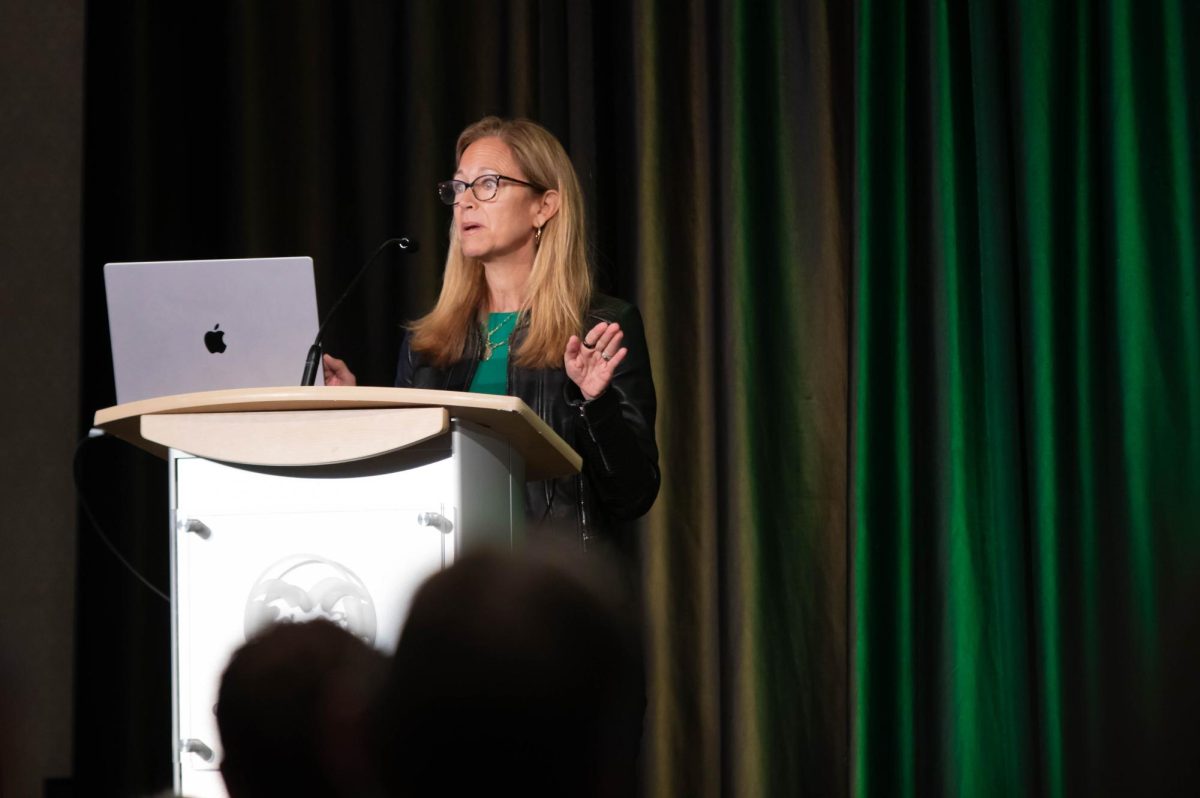Students know the names of buildings like Clark, Eddy and Yates well, but does anyone really know the history behind these names?
One hundred and forty-nine years ago, Colorado State University had to prove their legitimacy, and Linda Meyer, an archivist for the Agricultural and Natural Resources Collection, talked about the early history of CSU and this proof of legitimacy.
“I think one of the most fun things about CSU is that the original building was a little brick building that they called the ‘claim shanty,’” Meyer said. “They had to put it up quickly in order to establish the right of Fort Collins to be the seat of the agricultural college.”
In 1879, the University welcomed their first students to Old Main, the second building on campus after the “claim shanty,” and the first classroom building.
Since then, a lot of things have changed.
Presently, CSU as a whole houses 705 buildings which then hold 3,295 classrooms and 1,237 laboratories for the outstanding total of approximately 10.4 million gross square feet.
University Planner Fred Haberecht works on the Master Plan as well as maintains the campus aesthetic.
“I’ve been here for almost 18 years. (The expansion of campus) has been very positive,” Haberecht said. “I think that growth has provided (a) diversity of opportunity.”
Some of the most well-known buildings at CSU, such as Clark, Eddy and Yates, are named after key figures in CSU’s history who got them in different ways.
In 1972, the then State Board of Agriculture approved a new policy that allowed classroom buildings to be named after individuals, rather than limiting the building to its functional purpose.
“The way that they used to do things was that they would name the residence halls after people, and they would name the classrooms’ buildings after the function of the building, so the engineering building or the botany building or agricultural science building,” Meyers said. “Now there’s an element of if somebody donates a lot of money for a building … (they) have the names of people who financed a lot of construction for the buildings.”
Meyers said that the Nancy Richardson Design Center is an example of a name contributed to a financial donor.
“You could say (with) the Richardson Design Center, someone who is very interested in interior design and wanted to provide that opportunity,” Meyers said. “So sometimes it’s the person (who) says ‘Hey I’d like to finance this kind of building,’ and sometimes it’s ‘We have this kind of building, and is there someone who’s willing to finance it?’ … It can go both ways.”
However, financial investors aren’t the only source for naming rights.
The construction on Clark Hall began in 1966 and officially finished in 1968. The three-wing building is a center for social sciences, providing an abundance of learning spaces for students, computer labs and offices for staff.
James Hansen, who wrote “CSU’s Sense of Place” with Linda Meyer and Gordon Hazard, elaborates on how Clark was chosen for the naming, even though he began in the math department.
“(Clark) was one of the people that went after research grants that allowed us to become a university,” Hansen said. “He was important enough in the early stages of the University that he got his name attributed to the building.”
Eddy Hall was named after Willard O. Eddy on Oct. 21, 1978.
“Willard Eddy was the heart and soul of liberal arts at Colorado State University. He started an honors program here (and) he gave lectures in philosophy … on the meaning of education and life,” Hansen said.
The Yates Hall construction totaled at $20 million according to “CSU’s Sense of Place.” On April 24, 2003, the Chemistry-Biosciences Hall was given a new name. Dedicated to Albert C. Yates, the 12th president of Colorado State.
According to SOURCE, Yates is the third University building to be named after a CSU president, after Charles A. Lory and William E. Morgan.
CSU has an extensive history, it will reach its 150th anniversary in 2020. Expansion and growth have helped CSU become the University it is today, Haberecht said.
“I think that thoughtfulness, planning and the expansion of the University has created a successful environment,” Haberecht said. “Success breeds success.”
Laura Studley can be reached at news@collegian.com or on Twitter @laurastudley_.





